
I know I said we aren’t looking at hostas in this post, but look at this Hosta Blueberry Muffin. Huge!
I love a good big leaf hosta. Hostas provide excellent texture and color contrast in the shade garden, which can quickly become a monotonous sea of middle-texture greens. But given the migration of rabbits into our area and the wearying yearly battle against slugs, it’s nice to have some hosta alternatives.
I’m constantly on the lookout for hosta substitutes that bring big-leaf energy to a shade garden design. Over time I’ve amassed quite a collection of them, which I didn’t quite realize until I decided to write this article!
In this article, I share 7 big leaf plants, plus photos, general plant information, and my personal experience growing them. These are garden-tested specimens that pass my ‘no fussy plant’ test (with one exception, which I will note) that shrug off insects and ‘exceptional’ weather events in our Zone 8a area. I’ve listed them from smallest to largest because ending with a bang is fun. I debated not including some of the smaller ones on the list, but ultimately decided to include them since they provide good contrast to finer-leaved plants like conifers and grasses.
Beesia
Beesia is the smallest of the big-leaved plants on my list, but it’s worth showing because it is fantastic. This small perennial boasts deep forest evergreen leaves that are glossier than any other plant in the garden, creating a striking contrast with almost any plant it’s paired with. And it’s almost entirely fuss-free. My only maintenance is trimming away any rough-looking leaves in the spring and spent flowers in the early summer.
I’ve propagated Beesia by division around the garden, which I highly recommend doing. However, this is definitely a full-shade plant – I’ve attempted to site a few divisions in sunnier locations, which promptly became sunburned. Most resources say to keep the soil evenly moist, but I’ve found it reasonably drought-tolerant if given full shade.
Common name: Beesia
Botanical name: Beesia deltophylla
Type: Evergreen perennial or ground cover
Size: 18″ to 24″ tall and wide
Growing zone: 6 – 8
Leaf description: Leathery, glossy, heart-shaped, deep green, slightly embossed texture
Leaf size: Roughly 4″
Companion plants: Hostas, Ferns
Aucuba Japonica
Varieties shown: Gold dust and Sawtoothed
I bought my first aucuba from Home Depot ages ago – as a houseplant. And that’s what I thought they were. I saw them sold as outdoor plants only after moving to the Pacific Northwest. And super hardy ones at that! They shrug off heat, cold, insects, browsing critters, drought – you name it. The only thing it suffers from is too much sun.
Aucuba’s leaves are oblong, pointed, and shiny and look great paired with soft Japanese maple leaves, especially red palmatum varieties. Gold dust looks great with ferns and yellow carex or hakonechloa. Aucubas are super slow growers, which is the only downside I can think of for this fabulous plant.
Common names: Japanese laurel, spotted laurel, gold dust plant
Botanical name: Aucuba japonica
Type: Broadleaf evergreen shrub
Size: Slow growing, 5 – 12 feet tall and wide
Growing zones: 6 – 10
Leaf description: Leathery, glossy, elliptic to narrow-ovate
Leaf size: Roughly 8″ long by 3″ wide on mature specimens
Companion plants: Ferns, Japanese Maple, Carex, Dwarf Conifers
Brunnera ‘Jack Frost’
Many years ago, I planted 4 Brunnera ‘Jack Frost’ as a wet-behind-the-ears homeowner that knew zip about gardening. And they are still kicking! In fact, I have the children/clones of them in several places. If I had to give a gold star to one perennial for good looks and low maintenance, this would be the winner.
Brunnera ‘Jack Frost’s’ silvery variegated heart-shaped foliage starts small in spring but continues growing into substantial 5 or 6″ wide leaves. Delicate lavender flowers cluster on tall stalks in mid-spring. I normally enjoy the flower show, then trim off the spent stalks so I can go back to enjoying the leaves.
The roughly textured leaves are unlike any other in the garden, almost like fine-grain sandpaper. That may be why there it sustains so little insect damage. The plant will wilt if surprised by the sun (like they are when the sun peeks over our roof in the middle of summer) but pops back into shape quickly. It is quite drought-tolerant too. I love these next to sword ferns or any other solid green plant.
Common names: Siberian Bugloss, Heartleaf Brunnera
Botanical name: Brunnera macrophylla ‘Jack Frost’
Type: Evergreen perennial or ground cover
Size: 18″ to 24″ tall and wide
Growing zones: 3a to 8b
Leaf size: Roughly 5″ at maturityCompanion plants: Hostas, Ferns, dark green foliage plants
Leaf description: Hairy, textured, rounded heart shape.Varigated silver and green.
Companion plants: Hostas, Ferns, dark green foliage plants
Bergenia ‘Winterglow’
Bergenia is so hardy in our area that you’ll often see mass plantings along shady roadways and in commercial landscaping. I’ve had my eye on it for years and finally purchased a few of the ‘Winterglow’ cultivars last winter. Plants that can thrive in hell strips are my kind of plant!
Bergenia’s thick, light green, oblong leaves emerge from the base plant base, giving the effect of a chunky lettuce plant. Bright magenta flower stalks that emerge in spring are a striking contrast to the foliage. However, the leaves are the stars of the show, and planted en masse, Bergenia is stunning. I’m not quite at a ‘mass planting’ yet with my newly planted 3, but I’m looking forward to the clumps growing together, though I may add a few more to the area now that I know they like their spot along our shaded backyard retaining wall.
Bergenia are moisture lovers but can (and do) tolerate dry shade. I’ll remove the spent flowers and old leaves, but that’s the only maintenance I’ve provided so far. I’ve situated ours at the edge of a short retaining wall near some hakonechloa and hosta. There’s also open space in that area, and I plan to add some other low-growing perennials like heuchera and pulmonaria.
Common names: Pigsqueak
Botanical name: Bergenia cordifolia
Type: Herbaceous perennial; evergreen in mild winter regions
Size: 1-2 feet wide and tall
Growing zones: 3 – 8
Leaf description: Leathery, glossy, elliptic to narrow-ovate
Leaf size: Roughly 1 foot long by 6 inches wide
Companion plants: Heuchera, Bleeding Heart, Hosta, Pulmonaria, Ligularia
Ligularia ‘Britt-Marie Crawford’
I’ll start off by saying that slugs love to dine on ligularia. However, I love this plant so much I’m willing to look past the chew holes on the lower leaves.
Deep maroon-purple serrated leaves 5 – 8″ across adorn 2-foot stalks, creating a stunning 3 – 4 foot wide display. Then, in late summer, bright yellow daisy-like flower form on 3-foot spikes creating a dazzling against the dark leaves below.
Even if it didn’t bloom, ligularia would be a worthy addition to the garden. The dark leathery foliage looks excellent paired with light green or blue plants. I have one under a rather old tree-formed pieris, situated among crocosmia, variegated hosta, and sword fern.
Our ligularia will droop a bit under intense sun, and it definitely needs plenty of water. And regular doses of (pet-friendly) slug bait in the early spring. It’s the highest-maintenance plant on this list, but definitely worth a try for the unique texture and color contrast.
Common names: Leopard Plant
Botanical name: Ligularia dentata ‘Britt-Marie Crawford’
Type: Herbaceous perennial
Size: 3 – 4 feet tall and wide
Growing zones: 4 – 9
Leaf description: Leathery, rounded with serrated edges. Flat to cup-shaped.
Leaf size: 5″ – 8″ in diameter
Companion plants: Hosta, Astilbe
Fatsia Japonica
Varieties shown: Species and ‘Spider’s Web‘
Fatsia japonica is one of those giant-leaved, Jurassic Park-looking plants that you wouldn’t think would grow anywhere north of Florida, but they are surprisingly hardy to zone 7. It’s an excellent choice for mild-winter gardens if you are going for a tropical look, but Fatsia also has merit in other garden styles because their huge, multi-lobed leaves are so bold and unique-looking. Shiny green foliage contrasts beautifully with fine-leaved plants and other smaller-sized tropical-esque plants like Aucuba Japonica.
We have the green species and ‘Spiders Web’ Fatsia, which has a lovely, detailed white and green variegation. Both grow quite large (5ft tall for Spider’s Web and up to 20 for the species!), and because they are evergreen, they make great background plants. In fact, I’m growing one as a privacy shrub, and it just grew past the top of our 6′ fence this year – I’m excited for next year!
Fatsia is nearly pest-free and exceedingly drought-tolerant. I’ve found that lack of water will stunt its growth, as will too much sun. But they are one of those plants I never have to bother about, which is the best kind of plant!
Common names: Big-leaf paper plant, Figleaf Palm, Formosa rice tree, Glossy-Leaved Paper Plant, Japanese Aralia, Paper Plant
Botanical name: Fatsia japonica
Type: Evergreen shrub
Size: 5 – 19 feet tall and wide (Spider’s Web is smaller than the species)
Growing zones: 7 – 9
Leaf description: Leathery, palmate
Leaf size: 5 – 14″ wide
Companion plants: Hellebore, Hosta, Solomon’s seal
Podophyllum pleianthum (Chinese Mayapple)
I saved this weirdo for last. Podophyllum pleianthum, or Chinese Mayapple, is one of those ‘collector’ plants you won’t likely find at your big box garden center.
The largest leaves on our 4-year-old plant are a whopping 14″ across. The leathery, gnarled, toothed texture and umbrella-like leaf shape looks like some kind of webbed dinosaur foot. In contrast to the leaf size, the plant only gets 2 feet tall, which creates a unique effect of masses of large leaves quite close to the ground.
In spring, bulbous, drooping, maroon flowers emerge underneath the leaves. They are beautiful but hidden – and also quite stinky. I often forget it’s flowered until I garden in the area and catch an unpleasant whiff!
Our Chinese Mayapple is situated in a drainage runoff area underneath an old, tree-formed Pieris, so it’s in plenty of shade where the soil stays naturally moist most of the year. This location keeps the plant healthy and pest free. The only issue is the leaves tend to collect fallen detritus from the nearby trees, which can discolor the surface. A blast of water or a leaf shake quickly remedies this.
If you have a shady, moist area and are ok with (or are, in fact, into) some stinky springtime flowers, I recommend Podophyllum pleianthum for your collection – it’s one of my favorite shade plants!
Common names: Chinese Mayapple
Botanical name: Podophyllum pleianthum
Type: Herbaceous perennial
Size: 2 feet tall and wide or wider
Growing zones: 6 – 8
Leaf description: Leathery, umbrella-shaped
Leaf size: 12 – 16″ wide
Companion plants: Trillium, Epimedium, Mahonia, Erythronium
Honorable Mentions
Here are a few bonus big-leaved plants that I didn’t include in my main list but are worth mentioning!
Oakleaf Hydrangea
A deciduous shrub with large, rough-textured, oak-leaf-shaped foliage. More adapted to shade than other hydrangea species. Several cultivars in various sizes are available.
Solomon’s Seal
4-foot arching stems emerge from underground rhizomes in early spring, adorned with 4 inch ovate leaves and sweet-smelling flowers. Drought tolerant. Variegated cultivars available. Can become a pest in some areas.
Lady’s Mantle
Slowly spreading, mounding perennial with 4-inch umbrella-shaped leaves. Foliage is a cool, light green and velvety in texture, capturing beaded water droplets after rain. Sprays of airy yellow blossoms arise in summer.
Final Words
I had a lot of fun compiling this list – it’s a nice reminder of all the fun beefy-leaved garden members scattered across the shady nooks of our property.
I hope you find this list helpful. Are there any broad-leaved shade plants you would add? Any you would remove? Let me know in the comments!
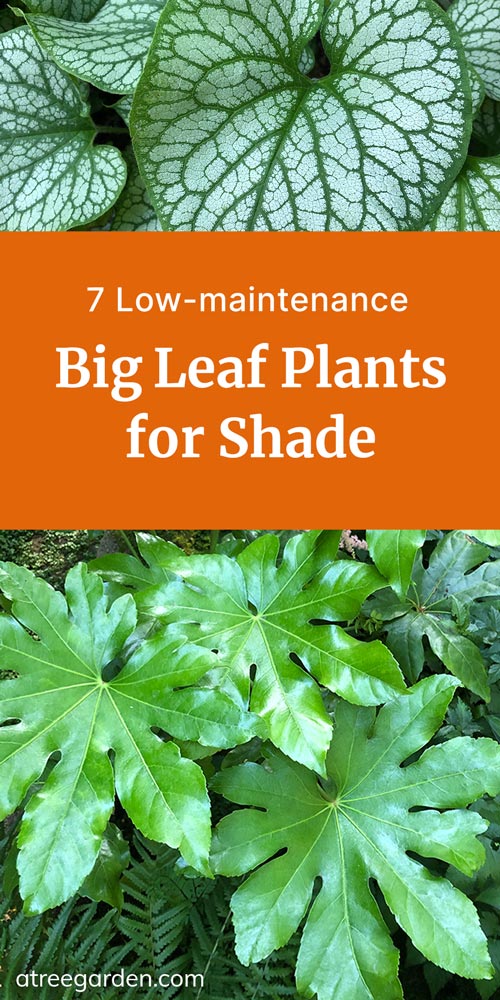


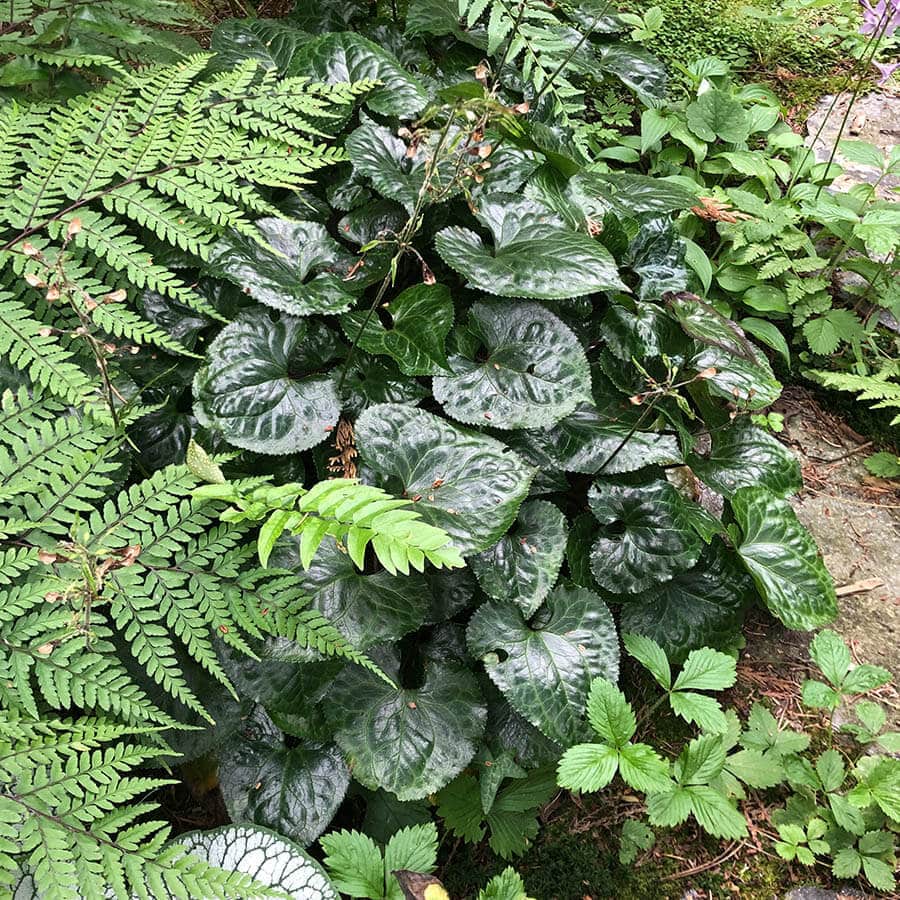




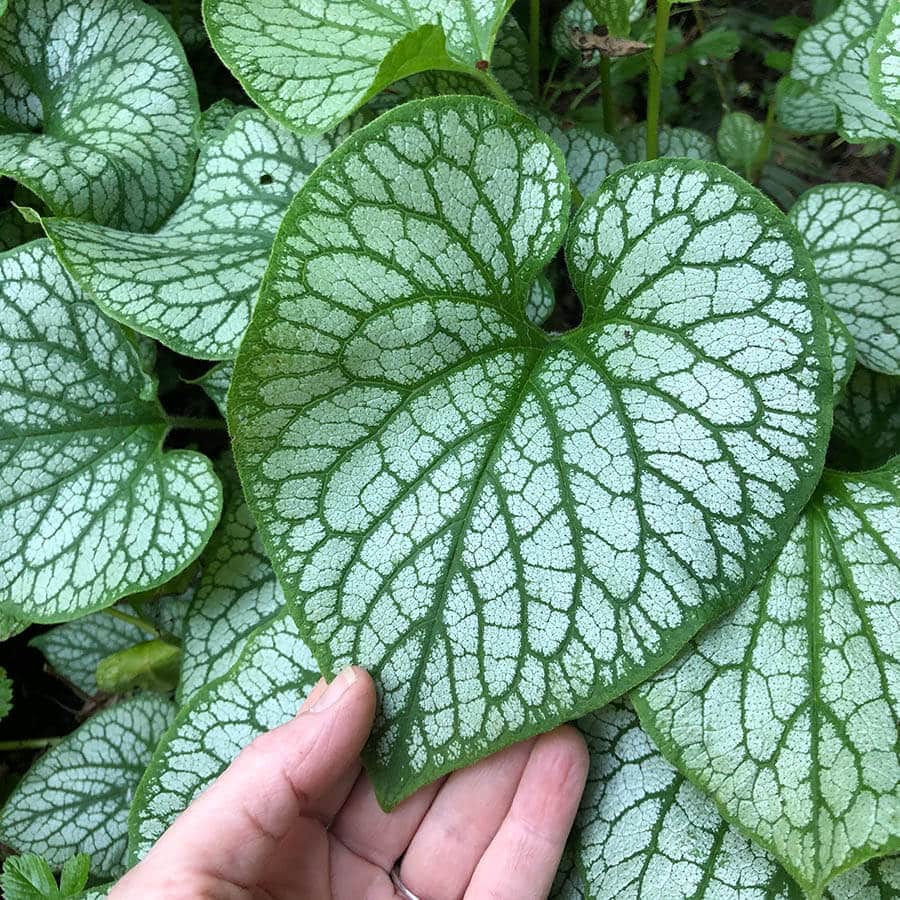


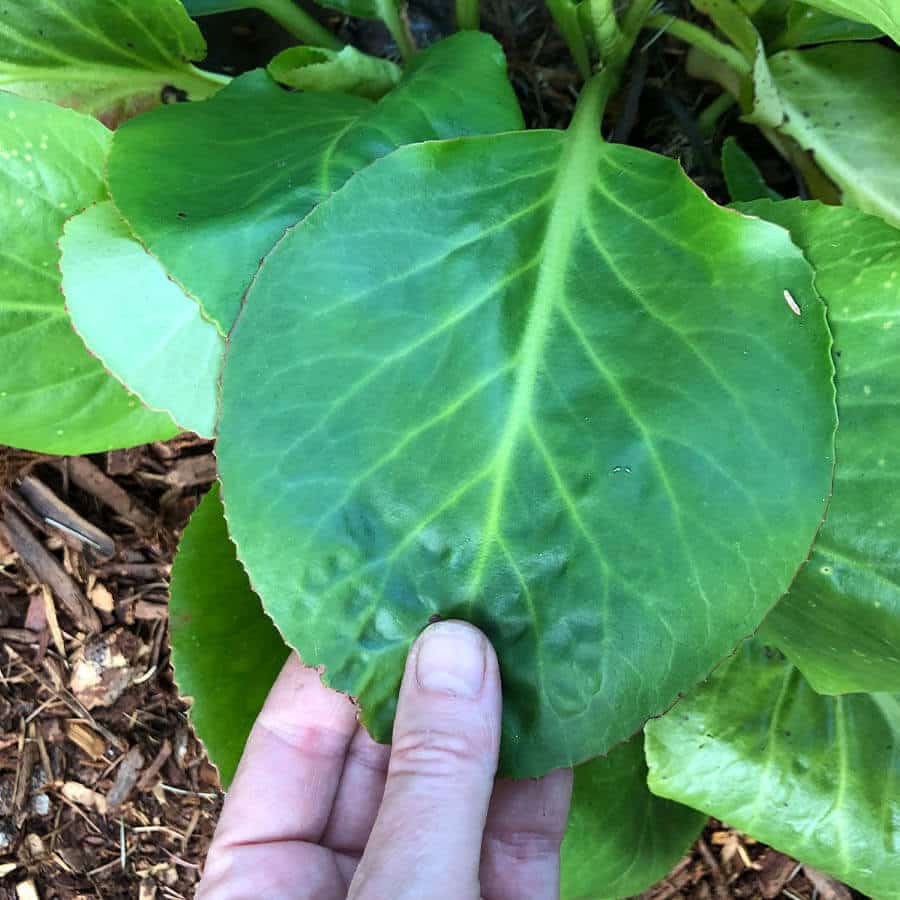
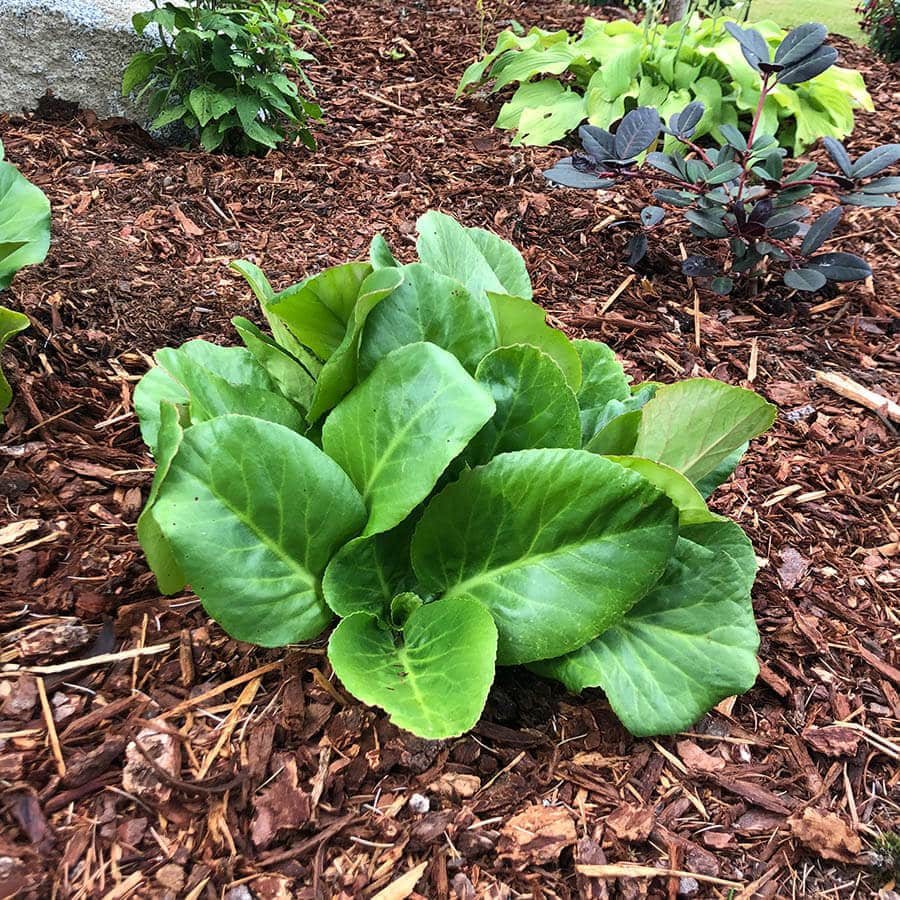

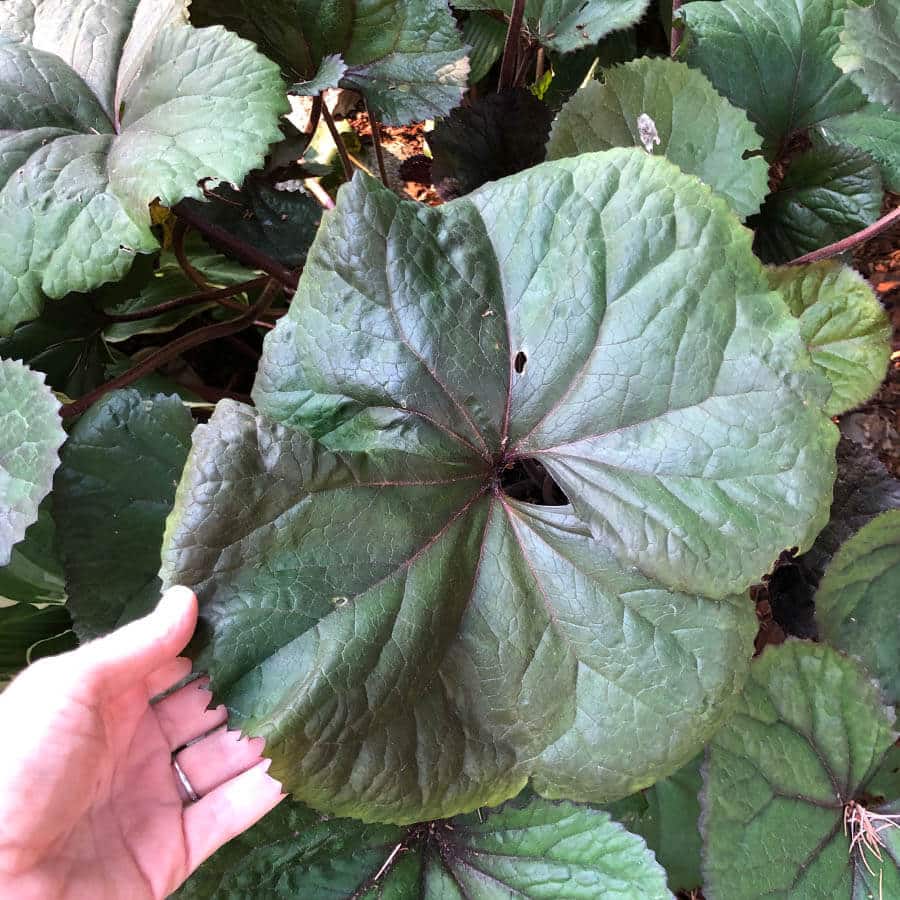
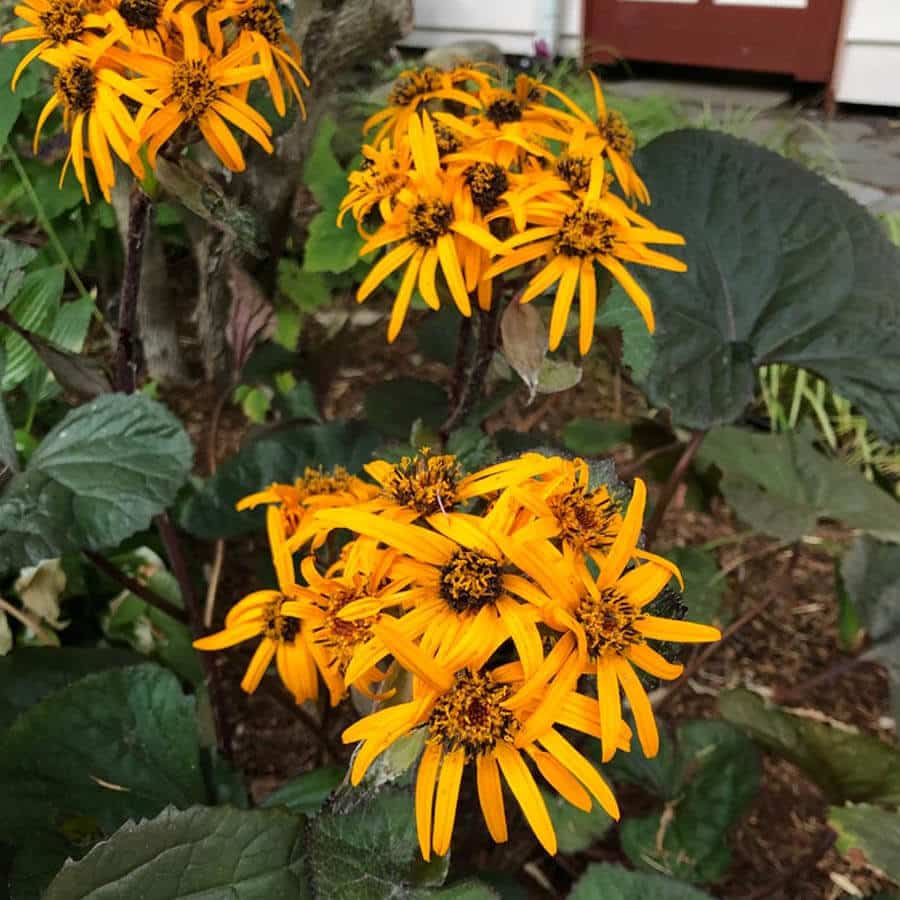

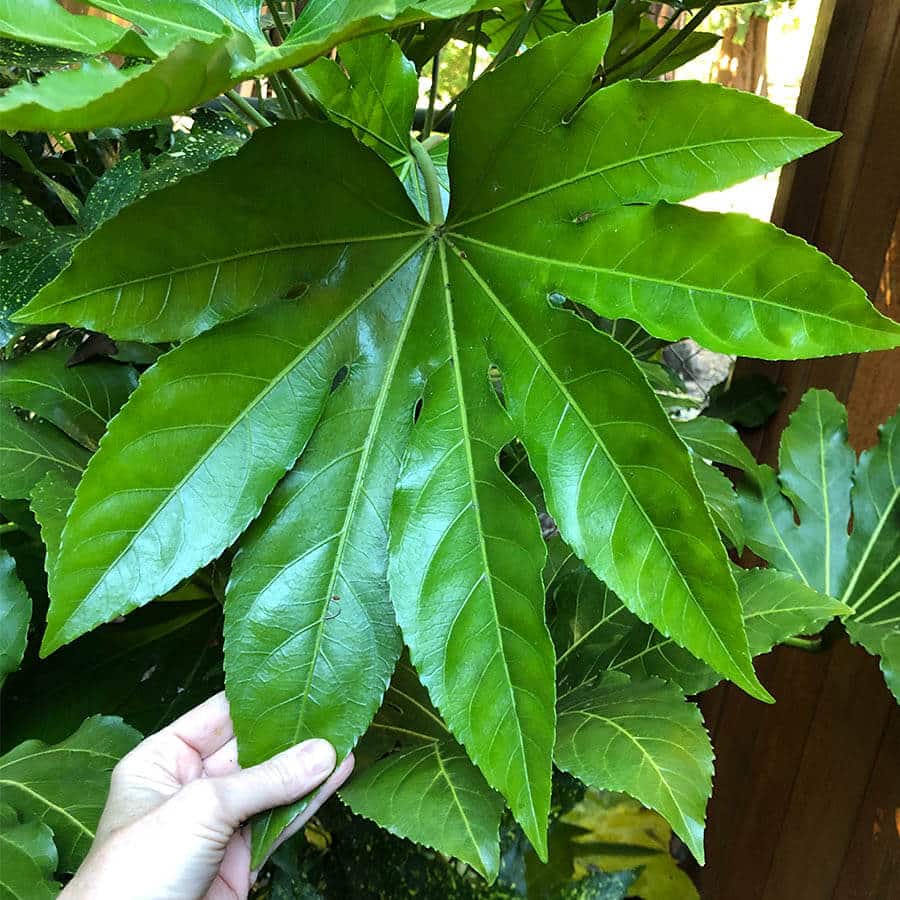

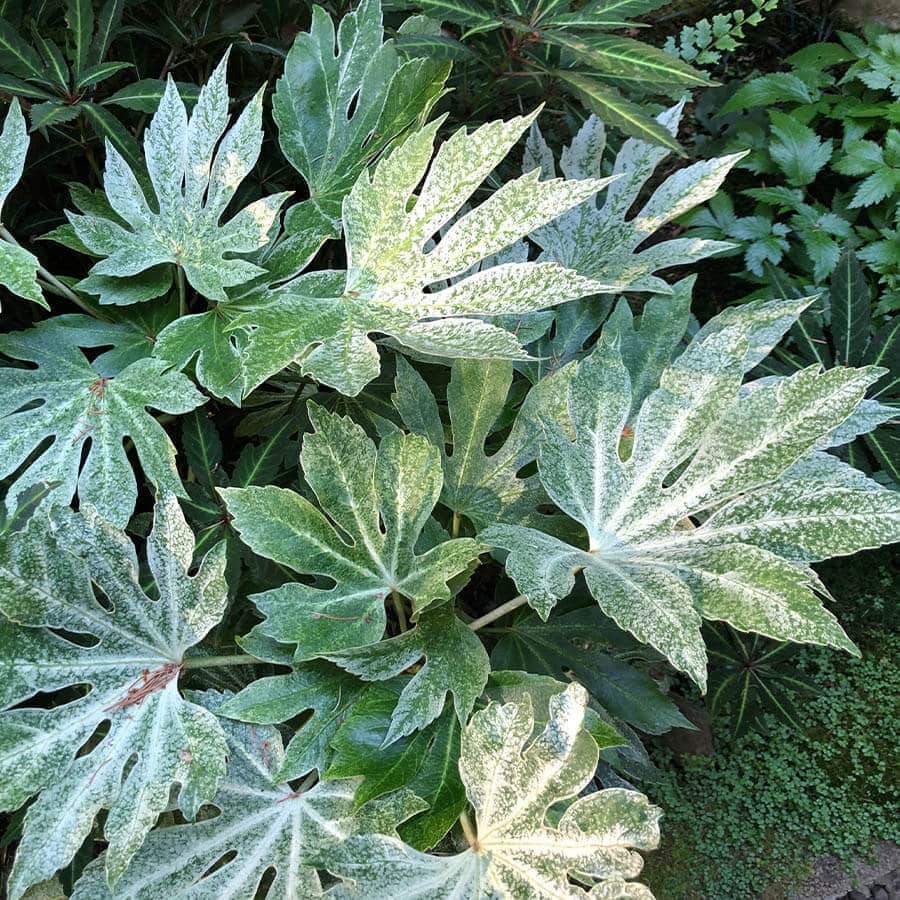
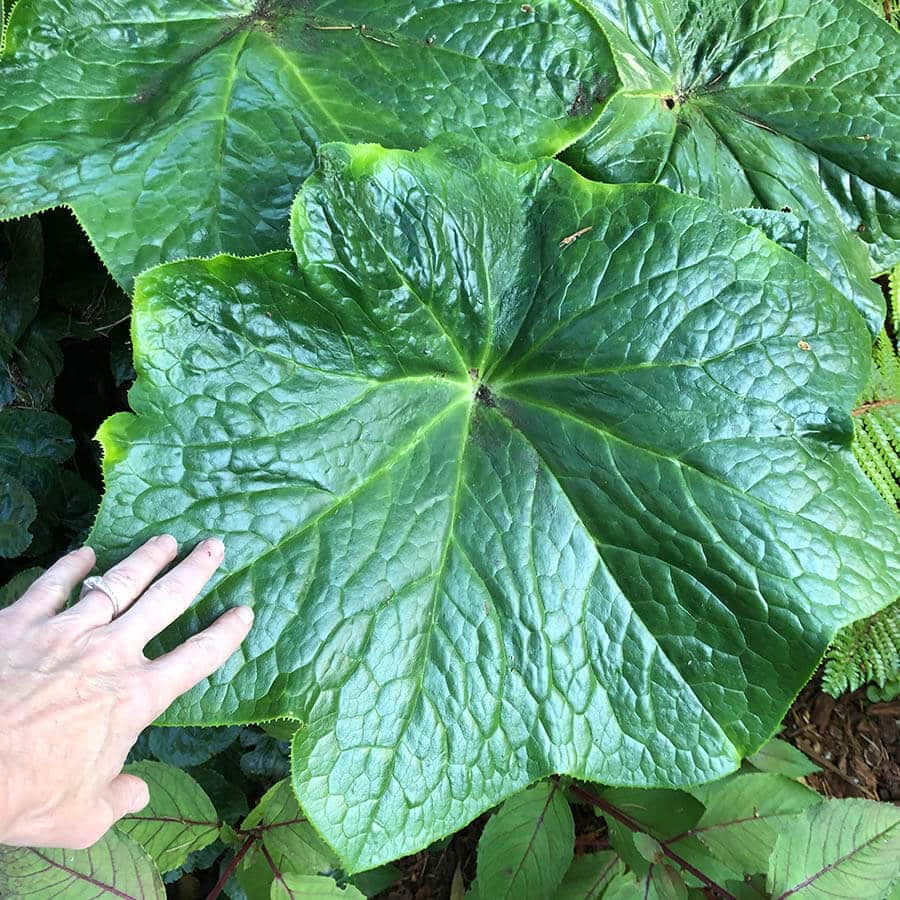

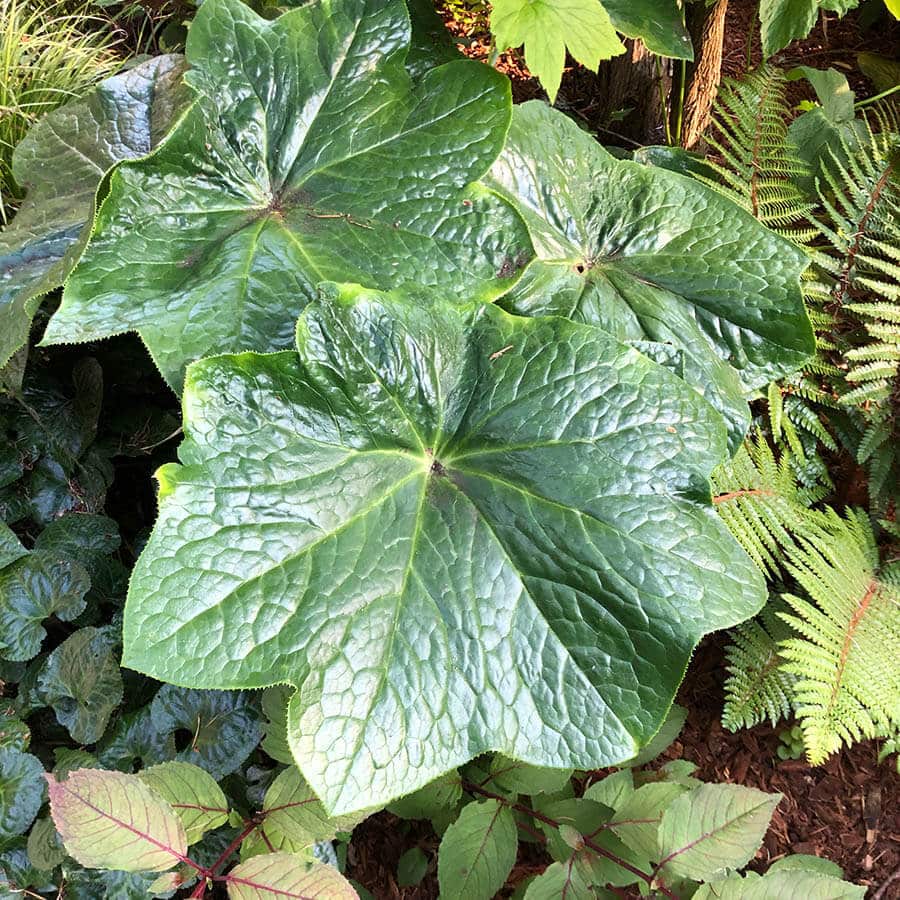
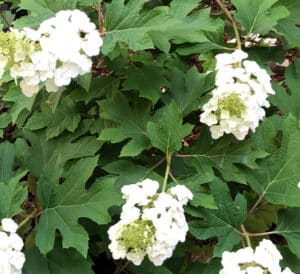
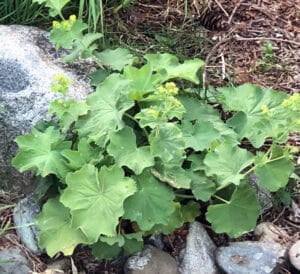
0 Comments